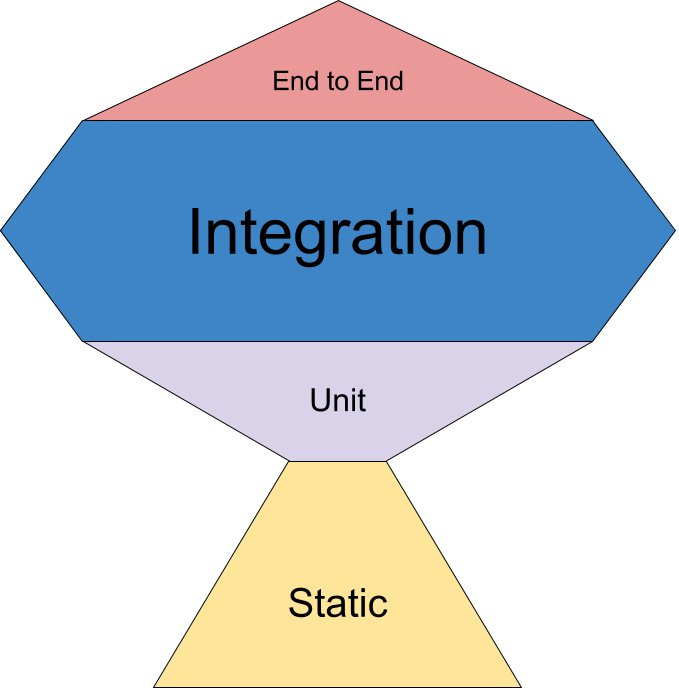Greetings, readers! Welcome to our weekly issue of The Testing Architect where we dive deep into the world of software testing. Today, we have an exciting lineup of topics to explore, starting with the foundational concept of the Test Pyramid and delving into the innovative approaches of the Testing Honeycomb and the Testing Trophy. Let's get started!
🗻 The Test Pyramid
Balancing Testing Levels for Optimal Results The Test Pyramid is a powerful framework that optimizes our testing efforts, ensuring a robust and efficient testing strategy. It consists of three layers: Unit Tests, Integration Tests, and UI/End-to-End Tests. Each layer plays a crucial role in verifying different aspects of our software.
At the foundation of the pyramid, we have Unit Tests. These tests focus on isolating and validating individual units of code, providing fast and reliable feedback on code correctness. With their efficiency and effectiveness, Unit Tests form the bedrock of our testing strategy.
Moving up the pyramid, we reach the Integration Test layer. Integration Tests examine the interactions between various components and ensure seamless collaboration. By catching issues that arise due to integration complexities, Integration Tests contribute to overall system stability and reliability.
At the top of the pyramid, we have UI/End-to-End Tests. These tests simulate user interactions and validate the entire system from start to finish. While they are slower and more resource-intensive, UI/End-to-End Tests provide a realistic perspective of the software's behavior and help identify any issues that may occur in the user workflow.
By leveraging the Test Pyramid, we strike a balance between different testing levels, optimizing our efforts to achieve high-quality software.
🐝🔬 Testing Honeycomb
A New Approach for Microservices Testing In the rapidly evolving landscape of Microservices, traditional testing models can present challenges. That's where the Testing Honeycomb comes into play! This innovative approach focuses on Integration Tests and minimizes Implementation Detail and Integrated Tests.
Integrated Tests, which rely on the correctness of other systems, can become fragile and limit flexibility. Instead, the Testing Honeycomb suggests using Integration Tests to verify a service's correctness in an isolated manner, explicitly testing interaction points. By using realistic fixtures, such as spinning up databases and querying the actual API, Integration Tests ensure accuracy and relevance without excessive Implementation Detail Tests.
In more complex scenarios, where events arrive in any order and subsets must build a valid model, Integration Tests remain effective. By putting messages on an in-memory event topic, consuming them, and verifying the output in the API, the focus remains on interaction points. Although feedback accuracy may slightly decrease, the benefits of speed and maintenance outweigh this limitation.
Implementation Detail Tests find their place in naturally isolated code parts with their own internal complexity. They cover specific scenarios, such as log parsing, and ensure the expected behavior of these isolated components.
The Testing Honeycomb approach aligns perfectly with the goals of testing Microservices. It provides confidence in code functionality through realistic fixtures, offers fast and reliable feedback (with slight trade-offs), and simplifies maintenance by testing from the edges. Moreover, reusing fixtures across services increases confidence in contract adherence and sets the stage for Consumer-driven Contract Based Testing.
🏆 The Testing Trophy
A Comprehensive Approach to Software Testing In our quest for excellence in software testing, we must acknowledge the Testing Trophy—an approach that encompasses the relative importance of different test types in catching bugs and ensuring software quality.
The Testing Trophy emphasizes the significance of static tests and unit tests as the foundation. These tests are fast, easy to run, and have a higher bug-catching potential. Integration tests and end-to-end tests complement them, enhancing software quality and stability.
By adopting the Testing Trophy approach, you can unlock a multitude of benefits that will elevate your software testing efforts:
✅ Catching more bugs: The Testing Trophy's comprehensive nature ensures a higher rate of bug detection, resulting in more reliable and robust software. By emphasizing the most important tests that catch the most bugs, you can significantly improve the overall quality of your codebase.
✅ Improved software quality: With a balanced focus on different types of tests, the Testing Trophy promotes thorough testing and helps uncover potential issues at various levels. This comprehensive approach leads to higher-quality software that meets user expectations and performs as intended.
✅ Reduced testing costs: By emphasizing the early detection of bugs through static and unit tests, the Testing Trophy helps minimize the time and effort spent on resolving issues later in the development cycle. This leads to cost savings in terms of both time and resources, allowing for more efficient software development processes.
✅ Enhanced productivity: The Testing Trophy encourages developers and testers to write better tests and make informed decisions based on the relative importance of different test types. This improves the efficiency of the testing process, reduces unnecessary efforts, and enables teams to deliver software more quickly without compromising quality.
In conclusion, the Testing Trophy provides a comprehensive and effective approach to software testing. By considering the relative importance of different test types and focusing on catching the most bugs, you can optimize your testing efforts, improve software quality, reduce costs, and enhance productivity. Embrace the Testing Trophy and unlock the full potential of your software testing endeavors. Let's celebrate the success of this comprehensive testing approach and continue to raise the bar for software quality together! 🏆🚀
Have you implemented the Testing Trophy in your testing practices? Share your experiences and thoughts in the comments below! Let's inspire and learn from each other in our journey toward excellence in software testing.





You should at least mention where you're getting this idea from, especially since you took their image without even crediting them: https://engineering.atspotify.com/2018/01/testing-of-microservices/